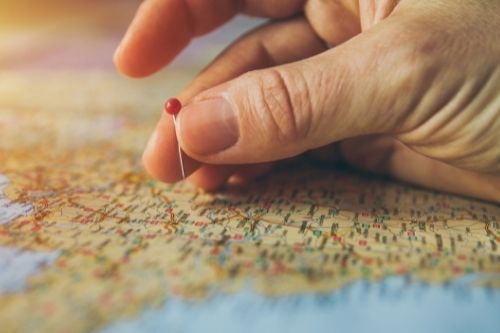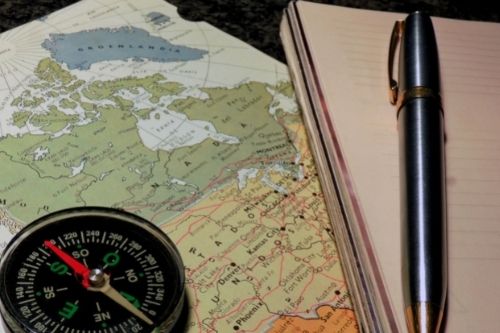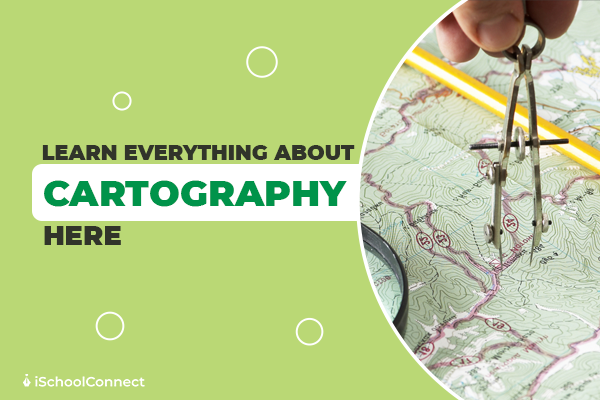Table of Contents
Cartography is the process of generating maps. The process has improved considerably due to advances in GIS technology. Cartography provides a basic platform for understanding the prevalence of various phenomena, and has made it easier to research and explain most geographical events. The number of students pursuing cartography has increased in the last decade, to remain at par with the demands of technology and consumer needs.
Modern cartography has an impact on our lives that most of us are probably unaware of. In this article, we will look at how cartography has evolved from the ancient to modern eras, as well as how the instruments of mapping have changed. We will also look at potential future techniques and trends you need to keep an eye on.
What is cartography?
Cartography is the study of the construction and design of maps. A fusion of practice, science, and art that defines the concepts and practical norms that underpin maps and mapmaking. It is an intersectional study, overlapping geography, earth science, topology, and even politics.
History of cartography

Maps have existed for centuries. Some of the oldest maps are in the form of cave wall paintings and stone tablets. The history of our world’s maps, in any format, is incredibly interesting. Cartography has evolved and expanded with each passing year, eventually reaching present times in the form of advanced geospatial technologies. However, it began as something a lot simpler.
Maps from the ancient era
The world’s oldest known map dates back to the 7th millennium BC. This ancient map is on a cave wall and reflects the details and location of the Anatolian city of Atalhöyük. It is 9 feet broad and features a volcano and 80 structures. Note that you can interpret these designs in a variety of ways.
The “mountain” in the painting represents leopard skin (some scientists, however, disagree with this interpretation, claiming that the mural is more likely a decorative geometric design than a map). It’s nearly impossible to make a firm claim one way or the other without more evidence. In any case, this illustration shows the lack of clarity which is a characterisitic of many ancient cartographic depictions. Even if it’s a map, the overall fidelity is obvious. Greek scholars and philosophers are typically credited with the development of higher-fidelity mapmaking.
The Greeks
The first published globe map is thought to have been drawn by the Greek philosopher Anaximander. However, that map is long lost, but copies based on descriptions from secondary sources exist. It is evident that this map was not very precise. Nonetheless, it still is one of the earliest known attempts to accurately show the entire world.
The Age of Exploration
In the 15th century, remarkable technologies such as the telescope, compass, and sextant sparked the Age of Exploration. The desire to learn more sparked a need for more detailed and accurate globe maps. As a result of this demand, European cartographers conducted massive field surveys, explored new territory, and produced the most detailed maps ever seen. The now-famous Mercator projection was created during this time period.
Maps in the modern era
With the advancement of geospatial technology, maps have changed dramatically, with Google Earth breaking new ground. Compasses, mylar sheets, planimeters, and dividers are examples of past cartography instruments that were used to construct analog maps. Modern cartography tools have evolved dramatically as digital mapping has grown more prevalent.
Tools for modern cartography
Today’s mapping tools have raised the bar on mapmaking, especially in terms of depth and accuracy, but also in terms of literality. A wide range of methods and technologies can be used in mapmaking. We will go over a couple of the most popular tools here –
- Aerial Photography
- Sensors
- GPS
- Satellites
- Geographic Information Systems (GIS)
Importance of cartography
- Cartography is beneficial because it promotes data visualization in space. This can show population trends, economic growth, and urbanization, among other things.
- Cartography is finds its use in disaster planning and recovery, and it allows emergency responders to examine what is going on in the area where they are working.
- Also, GPS and maps are easily available on mobile phones and other devices. People use maps every day as they travel, identify restaurants and shops, and follow their online transactions as they arrive. The importance of cartography is growing, and it is becoming increasingly ingrained in our daily lives.
What are the responsibilities of cartographers?

The majority of cartographers find employment in map-making. Individual cartographers conduct a wide range of tasks, but we can identify several common duties performed by cartographers in general.
- Editing
Editing entails a variety of responsibilities, including data evaluation and processing, scale and projection selection, design decisions, flowchart and specification creation, compilation preparation, and checking.
2. Drafting
Drafting is the process of creating the map image. This is usually through computers but can also be hand-done or a combination of both.
3. Administration
Whether a single person or a group of individuals work together to create weather maps, there is always need for an administrative acumen.
4. Teaching
Many people are born cartographers, in the sense that they have a natural knack for drawing maps, but given the complexity of modern cartography, even these individuals cannot hope to qualify as cartographers without professional instruction. As a result, many cartographers work as college and university professors.
5. Custodianship
All cartographers are responsible for custodianship. Custodianship is the preservation and upkeep of their work’s outcomes, whether it is print maps, original plastic overlays, or digital files.
Key Takeaways
- Cartography enables us to comprehend our location in the world, examine positional relationships, and consider the impact of geography on our daily life.
- Cartographers are in charge of data investigation, collection, storage, retrieval, evaluation, and manipulation, as well as map creation.
- Cartography is an interesting subject with a long and illustrious history.
- Modern cartography is built on a millennia-old basis that continues to expand and evolve with each passing year.
Liked this Blog? Read Archaeology | Everything you must know about this course
You can comment below and share your thoughts.
FAQs
Q1. What to do to become a cartographer?
Answer – A bachelor’s degree in cartography or geography, or any other suitable degree, such as surveying, engineering, forestry, or any physical science, is required.
Q2. What qualities distinguish an excellent cartographer?
Answer – Cartographers are individuals with distinct personalities. They are inquisitive, systematic, reasonable, analytical, and logical in their approach.
Q3. Who was the first cartographer?
Answer – Anaximander was the first ancient Greek to draw a map of the world. Many people regard him to be the first mapmaker because of this.






